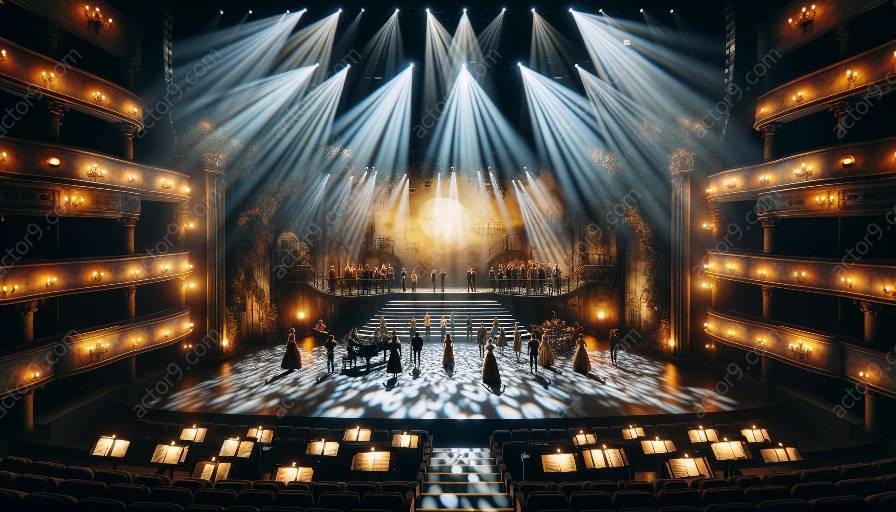Lighting design in musical theatre plays a crucial role in complementing the overall production and bringing the audience into the world of the musical. It involves the creative and technical elements of lighting to enhance the storytelling and bring the production to life. The collaborative efforts of lighting designers with other members of the theatre production team are integral to the success of a musical. Let's explore how lighting designers work collaboratively in a musical theatre context.
The Role of Lighting Design in Musical Theatre
Lighting design in musical theatre is a multifaceted and complex process that significantly impacts the audience's experience and perception of the performance. It involves the strategic use of lighting instruments, colors, intensity, and movement to enhance the mood, atmosphere, and visual composition of the musical.
Lighting designers in musical theatre are responsible for creating the lighting plot, which specifies the placement and operation of each lighting instrument. They collaborate closely with the creative team, including the director, choreographer, set designer, costume designer, and sound designer, to ensure that the lighting design aligns with the overall artistic vision of the production.
Collaborative Process of Lighting Designers
Collaboration is at the heart of the lighting design process in musical theatre. Lighting designers work closely with various members of the production team to bring their creative visions to fruition.
Creative Collaboration
At the outset of the production, lighting designers participate in concept meetings with the director, set designer, and other key creatives. These meetings allow the team to discuss the thematic and emotional content of the musical, as well as the desired visual aesthetic. By actively participating in these discussions, lighting designers gain valuable insights into the overall direction of the production, enabling them to align their designs with the narrative and emotional arc of the musical.
Collaboration with Set and Costume Designers
Lighting designers work collaboratively with set and costume designers to ensure that the overall visual design of the production is cohesive and integrated. By coordinating the lighting, set, and costume elements, the team aims to create a unified visual language that supports the storytelling and evokes the desired atmosphere.
Technical Collaboration
Once the creative concepts are solidified, lighting designers engage in technical collaboration with the production team, including the lighting crew, electricians, and stage management. This phase involves the practical implementation of the lighting design, including the installation, focusing, and programming of lighting instruments. Collaboration with the technical team is essential to ensure that the lighting design is executed effectively and safely during rehearsals and performances.
Enhancing the Theatrical Experience
Ultimately, the collaborative efforts of lighting designers with other members of the theatre production team play a vital role in enhancing the theatrical experience for audiences in musical theatre. The carefully crafted lighting design not only illuminates the stage but also amplifies the emotional and dramatic nuances of the musical, creating a dynamic visual and auditory experience.
Impact on Audience Engagement
The collaborative approach to lighting design in musical theatre contributes to the immersive nature of the production, drawing audiences into the world of the musical and heightening their emotional connection to the story and characters. The interplay between lighting, music, and choreography, all resulting from collaborative efforts, amplifies the impact of the performance, leaving a lasting impression on the audience.
Conclusion
Collaboration is a fundamental component of the lighting design process in musical theatre, as it ensures that the lighting design harmonizes with the overall artistic vision of the production, contributes to a seamless and compelling visual narrative, and enriches the audience's theatrical experience. By understanding the collaborative nature of the work of lighting designers and their dynamic interactions with other production team members, one gains insight into the multifaceted and captivating world of lighting design in musical theatre.




































